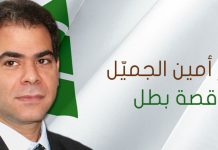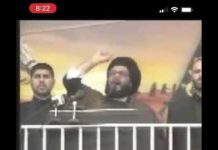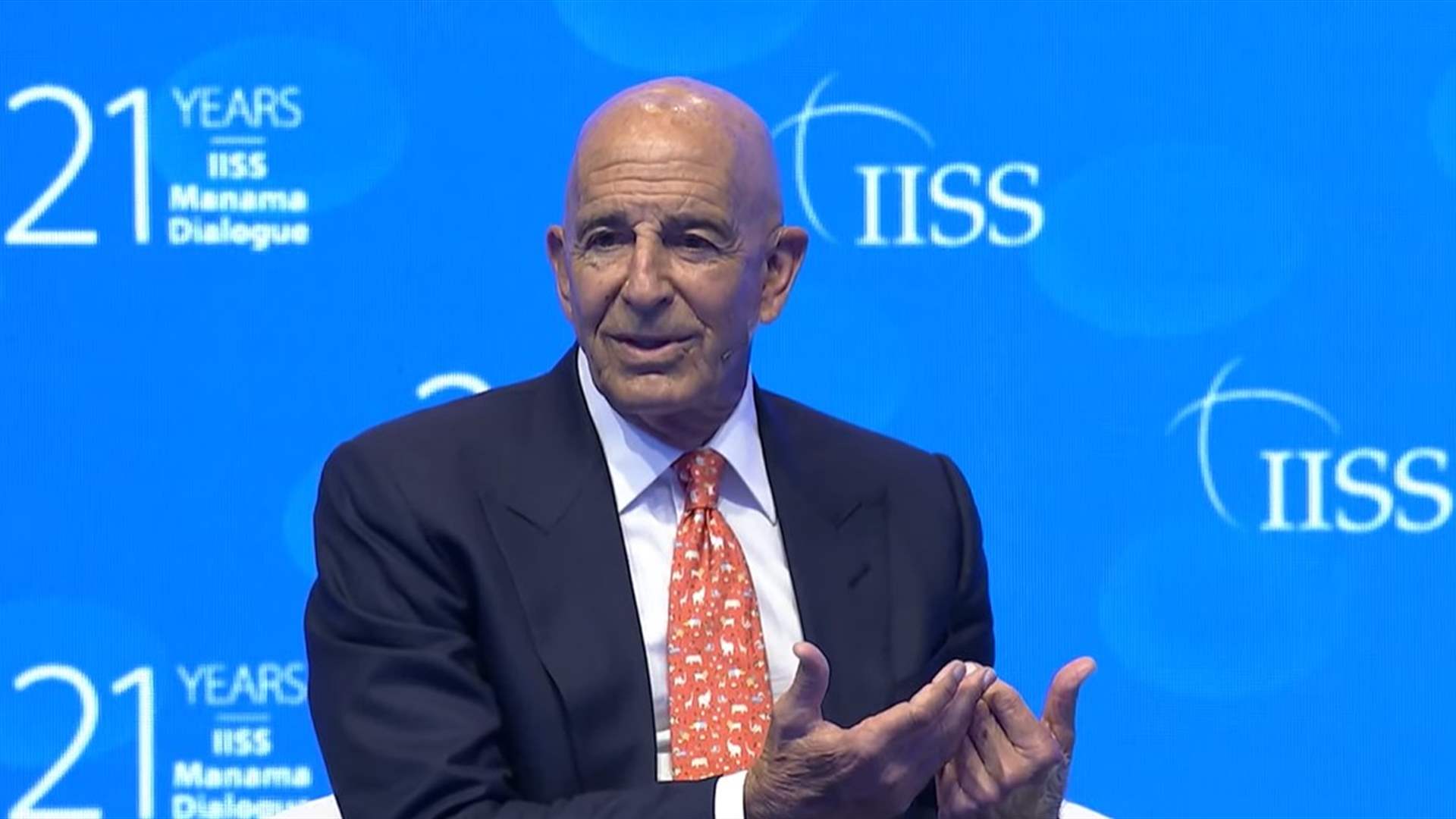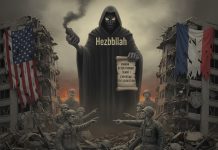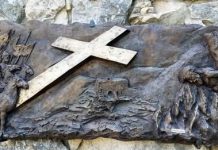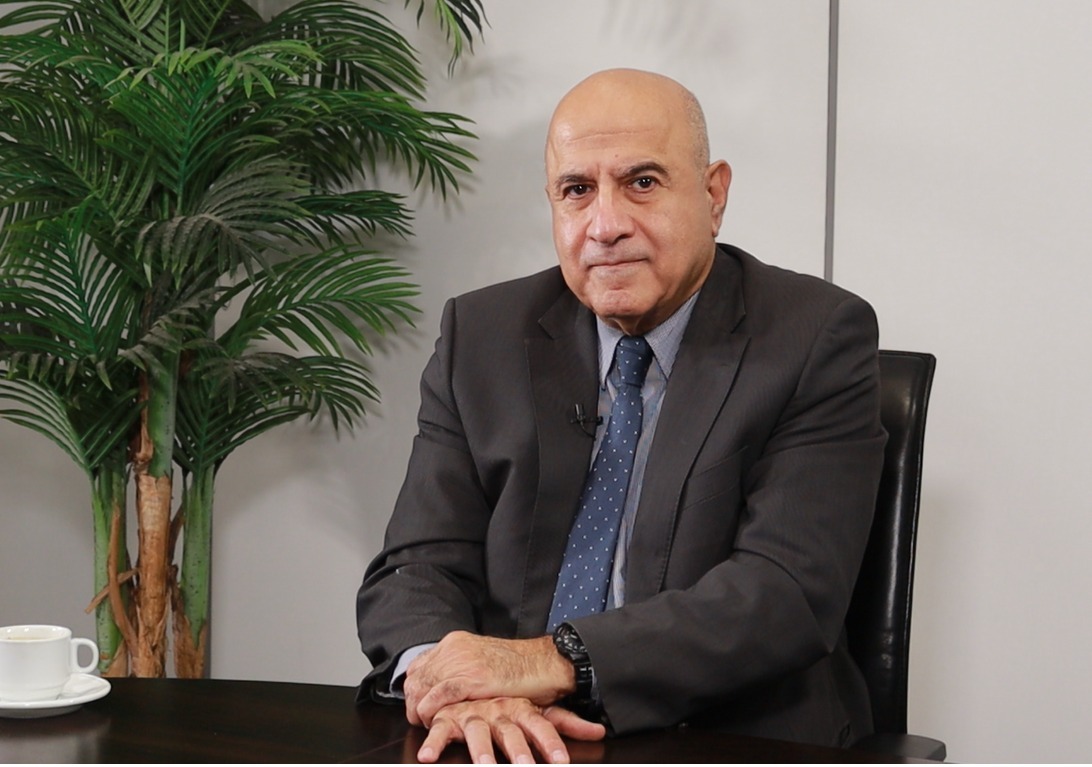واشنطن تتصدى أخيراً لجماعة الإخوان المسلمين
مارك دوبويتز ومريم وهبة/نقلاً عن موقع انسايت/25 تشرين الثاني/2025
(ترجمة من الإنكليزية بحرية بواسطة الياس بجاني)
Washington Finally Takes on the Muslim Brotherhood
Mark Dubowitz & Mariam Wahba/Insight/November 25/2025
(Translated freely from Arabic)
After weeks of hinting that a major policy shift was imminent, President Donald Trump signed an Executive Order (EO) on November 24 directing the State and Treasury Departments to begin the process of designating components of the Muslim Brotherhood as Foreign Terrorist Organizations (FTOs) and Specially Designated Global Terrorists (SDGTs). In doing so, the Trump administration has settled a long debate about how to best tackle the ever-growing Islamist movement, avoiding the structural mistakes that derailed previous U.S. efforts to target the Brotherhood. For years, Washington has been divided over how to confront it. One side has pushed for a sweeping, movement-wide designation, treating the organization as a single, monolithic entity. The other has argued for a targeted, branch-based strategy, blacklisting individual arms of the Brotherhood that cross the line from extremism into terrorism. The EO embraces the latter strategy, focusing on a designation framework that can withstand judicial scrutiny and streamline enforcement.
For decades, the Brotherhood has portrayed itself as a unified global movement. That narrative has always overstated the degree of central authority, but it is particularly outdated today. The modern Brotherhood is a sprawling network of national branches, ideological allies, and autonomous affiliates that share a historical lineage but not a unified chain of command. Some branches engage in domestic politics, others maintain armed wings, and many operate in the gray zone between activism and militancy. This fragmentation is neither incidental nor recent. It is a defining feature of the Brotherhood, and grasping it is essential for U.S. policymakers seeking to confront the threats the movement poses. Under U.S. law, an FTO designation requires meeting three clear standards: the organization must be foreign; it must engage in or retain the capability and intent to engage in terrorism; and its activities must threaten U.S. nationals or the national security of the United States. These statutory criteria, set out in Section 219 of the Immigration and Nationality Act, are intentionally rigorous. They exist to ensure that designations target actual threats rather than broad, loosely affiliated ideological networks. This legal and organizational reality explains why previous attempts to designate the Brotherhood failed. Washington could not point to a central headquarters, a single leadership structure, or an unbroken chain of operational control. Attempts in 2015 and during the first Trump administration stalled for exactly these reasons.
The case of Hamas, the Brotherhood’s Gaza branch, illustrates the logic of a branch-based strategy. The United States designated Hamas in 1997 following a sustained campaign of terrorist attacks. That designation focused on the branch that met the legal threshold while leaving other parts of the network to be assessed individually. The new EO establishes a permanent interagency process to extend this framework to additional Brotherhood branches that independently meet the criteria for FTO or SDGT status.
This framework offers several advantages. First, it enables immediate action against the most dangerous Brotherhood branches, including those directly engaged in terrorism or armed conflict and the media and financial ecosystems that enable them. Second, it allows for disciplined sequencing. Designations would build outward from the clearest cases, insulating the process from the evidentiary vulnerabilities that have undermined past attempts. Third, it preserves the integrity of U.S. counterterrorism authorities by ensuring that FTO and SDGT tools are applied to organizations that genuinely meet the legal standard rather than to an amorphous ideological movement. Fourth, it avoids sweeping in political actors whose activities, while objectionable or illiberal, do not rise to the level of terrorism and the designation of which would not withstand judicial review. Finally, it facilitates coordination with allies, many of whom have already designated specific Brotherhood-linked groups but have avoided movement-wide bans for the same legal reasons that constrain the United States.
While the EO formally identifies the first three branches targeted — those in Egypt, Jordan, and Lebanon — other branches of the Brotherhood could also meet the criteria for future review. Yemen’s Al-Islah Party, long presented as a political organization, includes senior figures with deep ties to al-Qaeda and maintains armed elements accused of collaborating with a U.S.-designated FTO, the Houthis. In addition to these, other Brotherhood-linked entities, like its many media outlets, may also warrant attention as evidence accumulates. By starting with the three named chapters, the administration establishes a framework that can expand methodically to include additional branches and affiliates that independently satisfy the statutory thresholds for FTO or SDGT designation. These examples underscore why the United States must abandon the fiction of a unified Muslim Brotherhood and adopt a structure that reflects operational reality. A movement-wide designation would collapse dozens of disparate actors into a single entity that does not exist in practice and cannot be demonstrated in court. A branch-based approach allows Washington to apply pressure methodically, build cases sequentially, and pursue a long-term counterterrorism campaign focused on enforcement.
The central task is now execution. State and Treasury must compile evidentiary records, pursue designations sequentially, and maintain the discipline that has eluded previous efforts. A sustainable U.S. strategy requires recognizing that the Brotherhood is not one organization but a network of branches, some of which unquestionably meet the statutory thresholds for FTO or SDGT status. The challenge is to target those branches directly and systematically, without collapsing the entire ecosystem into an unworkable abstraction. That is the strategy the administration has now embraced, and it is the strategy that can succeed where earlier efforts failed.
https://www.fdd.org/analysis/2025/11/24/washington-finally-takes-on-the-muslim-brotherhood/
**Mark Dubowitz is the chief executive of the Foundation for Defense of Democracies (FDD), where Mariam Wahba is a research analyst. Follow Mark on X @mdubowitz and Mariam on X @themariamwahba
واشنطن تتصدى أخيراً لجماعة الإخوان المسلمين
مارك دوبويتز ومريم وهبة/نقلاً عن موقع انسايت/25 تشرين الثاني/2025
(ترجمة من الإنكليزية بحرية بواسطة الياس بجاني)
بعد أسابيع من التلميحات باقتراب تحول كبير في السياسة، وقّع الرئيس دونالد ترامب أمراً تنفيذياً (EO) في 24 نوفمبر يوجه وزارتي الخارجية والخزانة لبدء عملية تصنيف مكونات من جماعة الإخوان المسلمين كـ “منظمات إرهابية أجنبية” (FTOs) و “إرهابيين عالميين مصنفين بشكل خاص” (SDGTs). وبذلك، تكون إدارة ترامب قد حسمت جدلاً طويلاً حول أفضل طريقة للتعامل مع الحركة الإسلاموية المتنامية، متجنبة الأخطاء الهيكلية التي أجهضت الجهود الأمريكية السابقة لاستهداف الجماعة.
لسنوات، كانت واشنطن منقسمة حول كيفية مواجهة الجماعة. دفع أحد الأطراف باتجاه تصنيف شامل يشمل الحركة بأكملها، والتعامل مع المنظمة ككيان واحد متجانس. وجادل الطرف الآخر بضرورة تبني استراتيجية مستهدفة قائمة على الفروع، وإدراج الأذرع الفردية للإخوان التي تتجاوز الخط الفاصل من التطرف إلى الإرهاب في القائمة السوداء. يتبنى الأمر التنفيذي الاستراتيجية الأخيرة، مع التركيز على إطار للتصنيف يمكن أن يصمد أمام التدقيق القضائي ويبسّط عملية الإنفاذ.
لعقود، صورت جماعة الإخوان المسلمين نفسها على أنها حركة عالمية موحدة. لطالما بالغت هذه الرواية في تقدير درجة السلطة المركزية، لكنها تبدو بالية اليوم بشكل خاص. إن جماعة الإخوان الحديثة هي شبكة مترامية الأطراف من الفروع الوطنية والحلفاء الأيديولوجيين والكيانات المستقلة التي تشترك في نسب تاريخي ولكن لا تملك سلسلة قيادة موحدة. ينخرط بعض الفروع في السياسة الداخلية، ويحتفظ البعض الآخر بأجنحة مسلحة، ويعمل الكثير منها في المنطقة الرمادية بين النشاط السياسي والعمل المسلح. هذا التشرذم ليس عرضياً ولا حديثاً؛ إنه سمة مميزة لجماعة الإخوان، وفهمها أمر ضروري لصناع السياسة الأمريكيين الساعين لمواجهة التهديدات التي تشكلها الحركة.
بموجب القانون الأمريكي، يتطلب تصنيف “منظمة إرهابية أجنبية” استيفاء ثلاثة معايير واضحة: يجب أن تكون المنظمة أجنبية؛ ويجب أن تكون منخرطة في أعمال إرهابية أو تحتفظ بالقدرة والنية للانخراط فيها؛ ويجب أن تهدد أنشطتها المواطنين الأمريكيين أو الأمن القومي للولايات المتحدة. هذه المعايير القانونية، المنصوص عليها في القسم 219 من قانون الهجرة والجنسية، هي معايير صارمة عمداً. وهي موجودة لضمان أن التصنيفات تستهدف التهديدات الفعلية بدلاً من الشبكات الأيديولوجية الواسعة والفضفاضة.
هذا الواقع القانوني والتنظيمي يفسر سبب فشل المحاولات السابقة لتصنيف جماعة الإخوان. لم تتمكن واشنطن من الإشارة إلى مقر مركزي، أو هيكل قيادي واحد، أو سلسلة متواصلة من السيطرة العملياتية. تعثرت المحاولات في عام 2015 وخلال الإدارة الأولى لترامب لهذه الأسباب تحديداً.
توضح حالة حماس، فرع الإخوان في غزة، منطق استراتيجية قائمة على الفروع. صنفت الولايات المتحدة حماس في عام 1997 بعد حملة متواصلة من الهجمات الإرهابية. ركز هذا التصنيف على الفرع الذي استوفى العتبة القانونية مع ترك أجزاء أخرى من الشبكة لتقييمها بشكل فردي. يؤسس الأمر التنفيذي الجديد عملية دائمة مشتركة بين الوكالات لتوسيع هذا الإطار ليشمل فروعاً إضافية للإخوان تستوفي بشكل مستقل معايير وضع “منظمة إرهابية أجنبية” أو “إرهابي عالمي مصنف بشكل خاص”.
يوفر هذا الإطار عدة مزايا. أولاً، يمكّن من اتخاذ إجراءات فورية ضد أخطر فروع الإخوان، بما في ذلك تلك المنخرطة بشكل مباشر في الإرهاب أو الصراع المسلح، والنظم البيئية الإعلامية والمالية التي تمكنها. ثانياً، يسمح بالتسلسل المنضبط. ستبدأ التصنيفات من الحالات الأوضح، مما يحمي العملية من نقاط الضعف في الأدلة التي قوّضت المحاولات الماضية. ثالثاً، يحافظ على نزاهة سلطات مكافحة الإرهاب الأمريكية من خلال ضمان تطبيق أدوات “منظمة إرهابية أجنبية” و “إرهابي عالمي مصنف بشكل خاص” على المنظمات التي تستوفي المعيار القانوني حقاً بدلاً من حجة حركة أيديولوجية غير واضحة المعالم. رابعاً، يتجنب إدراج الفاعلين السياسيين الذين لا ترقى أنشطتهم، رغم كونها مرفوضة أو غير ليبرالية، إلى مستوى الإرهاب ولن يصمد تصنيفها أمام المراجعة القضائية. أخيراً، يسهّل التنسيق مع الحلفاء، الذين قام العديد منهم بالفعل بتصنيف مجموعات محددة مرتبطة بالإخوان لكنهم تجنبوا حظراً على مستوى الحركة لنفس الأسباب القانونية التي تقيد الولايات المتحدة.
بينما يحدد الأمر التنفيذي رسمياً الفروع الثلاثة المستهدفة أولاً — تلك الموجودة في مصر والأردن ولبنان — يمكن لفروع أخرى من الإخوان أيضاً أن تستوفي المعايير للمراجعة المستقبلية. فحزب الإصلاح اليمني، الذي طالما قُدِّم على أنه منظمة سياسية، يضم شخصيات رفيعة لها صلات عميقة بتنظيم القاعدة ويحتفظ بعناصر مسلحة متهمة بالتعاون مع منظمة إرهابية أجنبية مصنفة أمريكياً، وهي الحوثيون. بالإضافة إلى هؤلاء، قد تستدعي كيانات أخرى مرتبطة بالإخوان، مثل منابرها الإعلامية العديدة، الاهتمام أيضاً مع تراكم الأدلة. من خلال البدء بالفروع الثلاثة المذكورة، تؤسس الإدارة إطار عمل يمكن أن يتوسع منهجياً ليشمل فروعاً وكيانات تابعة إضافية تستوفي بشكل مستقل العتبات القانونية لتصنيف “منظمة إرهابية أجنبية” أو “إرهابي عالمي مصنف بشكل خاص”.
تؤكد هذه الأمثلة لماذا يجب على الولايات المتحدة التخلي عن وهم جماعة الإخوان المسلمين الموحدة واعتماد هيكل يعكس الواقع العملياتي. فالتصنيف على مستوى الحركة سيجمع عشرات الفاعلين المتباينين في كيان واحد غير موجود في الممارسة العملية ولا يمكن إثباته في المحكمة. يسمح النهج القائم على الفروع لواشنطن بتطبيق الضغط منهجياً، وبناء القضايا تسلسلياً، ومتابعة حملة طويلة الأمد لمكافحة الإرهاب تركز على الإنفاذ.
المهمة المركزية الآن هي التنفيذ. يجب على وزارتي الخارجية والخزانة تجميع السجلات الإثباتية، ومتابعة التصنيفات تسلسلياً، والحفاظ على الانضباط الذي أفلت من الجهود السابقة. تتطلب الاستراتيجية الأمريكية المستدامة الاعتراف بأن الإخوان ليست منظمة واحدة بل شبكة من الفروع، بعضها يلبي بلا شك العتبات القانونية لوضع “منظمة إرهابية أجنبية” أو “إرهابي عالمي مصنف بشكل خاص”. يكمن التحدي في استهداف هذه الفروع مباشرة وبشكل منهجي، دون تجميع النظام البيئي بأكمله في تجريد غير عملي. هذه هي الاستراتيجية التي تبنتها الإدارة الآن، وهي الاستراتيجية التي يمكن أن تنجح حيث فشلت الجهود السابقة.
https://www.fdd.org/analysis/2025/11/24/washington-finally-takes-on-the-muslim-brotherhood/
مارك دوبويتز هو الرئيس التنفيذي لمؤسسة الدفاع عن الديمقراطيات (FDD)، ومريم وهبة هي محللة أبحاث فيها. يمكن متابعة مارك على X @mdubowitz ومريم على X @themariamwahba

